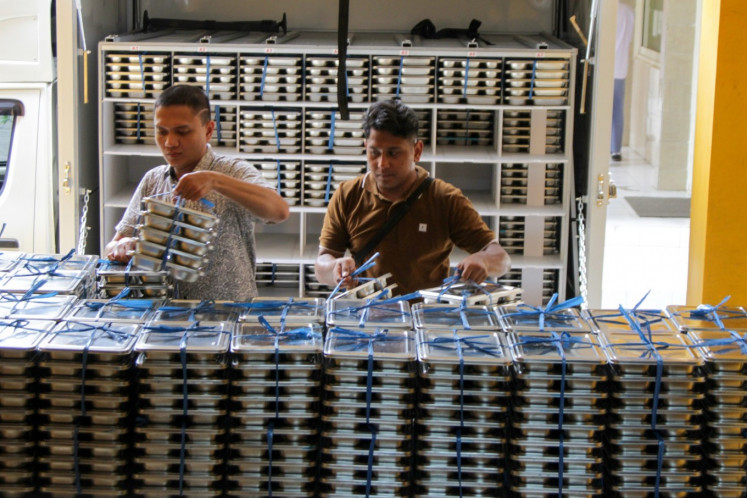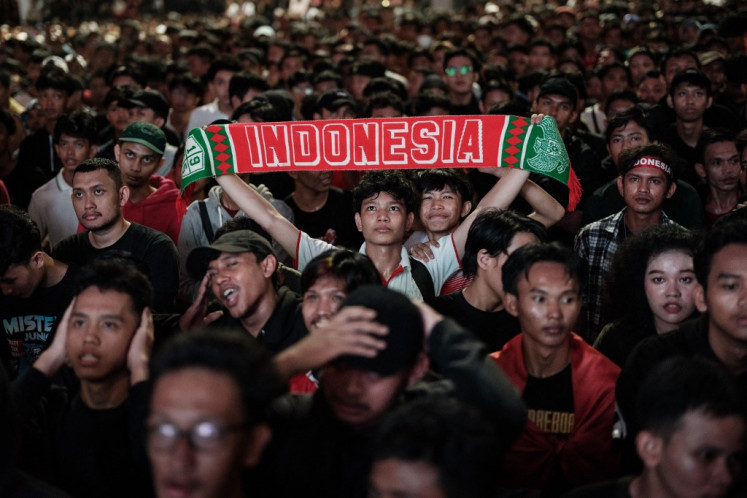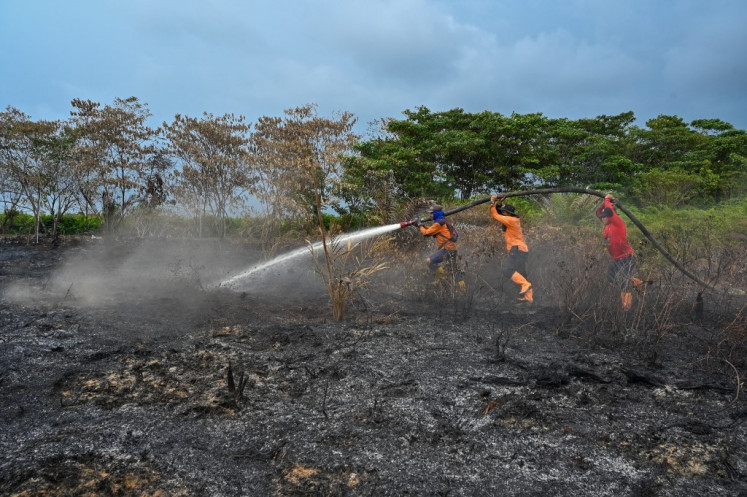10 unique Indonesian traditions to ring in the new year
Change text size
Gift Premium Articles
to Anyone
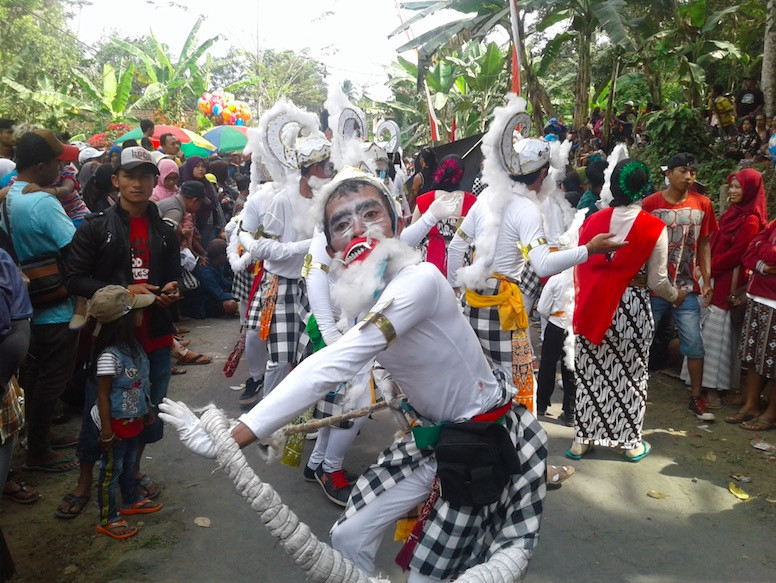
M
any people have been getting ready to celebrate New Year’s Eve, which coincides with the ‘malam Minggu’ (Saturday night) fever this week. While most people around the world will be marking the transition from 2022 to 2023 with a fireworks show or countdown parties, the unique traditions below have a special significance for Indonesians.
New Year’s Eve is usually full of joyous celebration and hopeful expectations of what the coming year may bring. For many, it marks a fresh start, even a time to reinvent or better themselves. It is also a time to be grateful for all that we have experienced and overcome in the past 12 months.
Every country has its New Year traditions, and Indonesia have several unique ways of welcoming the coming year that are representative of its diverse cultures and pluralistic society. Here, we journey west to east across the archipelago for a glimpse of these varied celebrations.
Marbinda: North Sumatra
Marbinda is a tradition observed primarily by the Batak community in North Sumatra. Similar to Idul Adha, the Islamic Day of Sacrifice, Marbinda involves ritual animal slaughter followed by sharing the meat equally with others.
To have enough funds to purchase the sacrificial animals, the members of a Batak community pool their money together before Christmas or New Year’s Eve. The collective fund determines the kind of animal they can buy, and buffaloes or pigs are often sacrificed during the celebration.
Mandok Hata: Batak
During Mandok Hata, another Batak tradition, families gather together and pray on New Year’s Eve, regardless of their religion or faith. In the Batak language, mandok hata translates as “express words” and means expressing one’s heart, and the tradition encourages family members to be open with and forgiving toward one another.
Once the family has finished praying, the youngest child sums up the year that has just passed: this can include asking for forgiveness, indicating a change of heart or sharing hopes, wishes and dreams for the year ahead.
Rabo-Rabo: Jakarta
Despite its modern lifestyle, Jakarta’s Betawi culture also has its own, unique New Year tradition. Adapted from the Portuguese during the colonial era, Rabo-Rabo involves visiting relatives at home to wish them good tidings in the new year. Rabo-Rabo is commonly practiced in Kampung Tugu of Cilincing, North Jakarta, where many people in the local community are of Portuguese heritage.
The tradition resembles the halal bi halal Muslims hold during Idul Fitri, but the similarity ends there. Rabo-Rabo also involves playing music and dancing, ending with the participants anointing each other’s faces with colorful powder. This New Year’s Eve tradition is said to represent mutual repentance and forgiveness.
Lantern festivals: Dieng & Borobudur
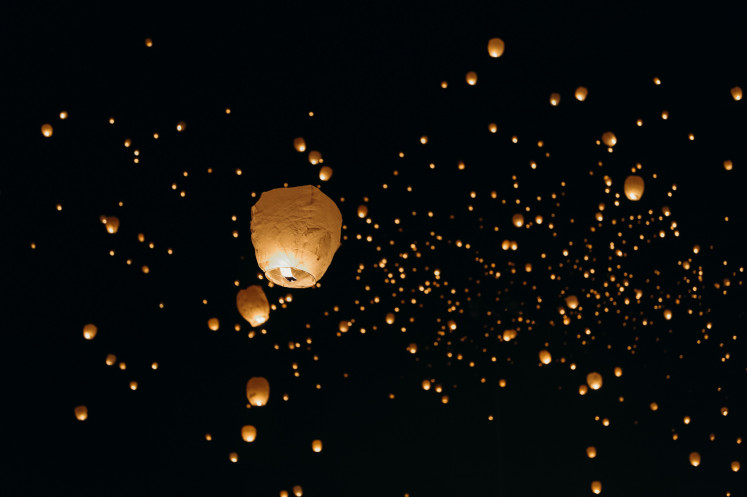
In the Dieng highlands of Central Java and Borobudur in Yogyakarta, floating lanterns will light up the night sky come New Year’s Eve, showering the ancient temples below with a solemn glow to reveal the regions’ strong mystical and spiritual ties. Being witness to this enchanting spectacle makes Dieng and Borobudur, as well as Yogyakarta as a whole, among the most popular destinations to celebrate New Year.
Aside from New Year’s Eve, a floating lantern festival is occasionally held in Yogyakarta for other holidays and as tourist attractions. For example, the province held the Lanterne Festival de Paris (Parisian lantern festival) on Sept. 22, 2022 at Bantul regency’s Parangtritis Beach, home to the infamous underwater realm of the Queen of the Southern Seas, Nyi Roro Kidul. The annual cultural and creative tourism event saw the biggest ever turnout this year, with 5,000 floating lanterns riding the ocean breeze across the night sky.
All-night ‘wayang kulit’: Yogyakarta
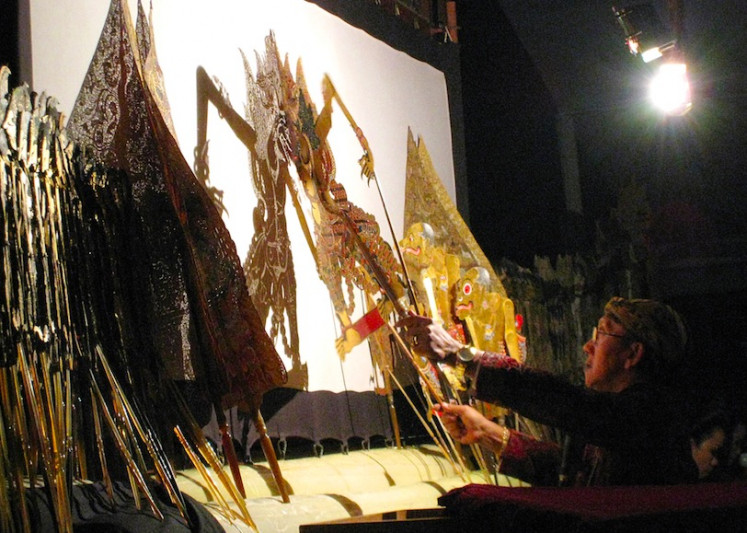
Certain districts and churches in Yogyakarta present a series of wayang kulit (leather puppet) shows depicting the birth of Jesus Christ for Christmas each year. The performance is usually followed by a church service held in Javanese, with worshipers in Yogyakarta’s traditional dress.
For New Year’s Eve, the wayang kulit show lasts all night, with the show’s organizers sometimes inviting public figures as guest stars.
‘Penjor’: Bali
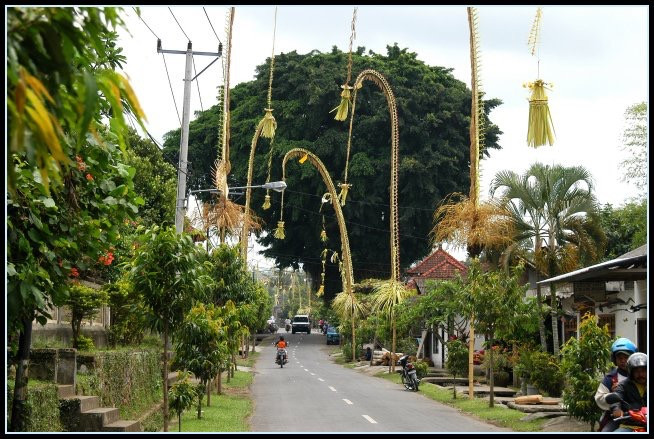
Aside from the lavish events organized for Christmas and New Year’s Eve at restaurants, music venues and hotels, many Balinese will celebrate the year’s end in traditional outfits.
Women wear colorful Balinese kebaya (blouse), often made of lace or from fabrics embellished with cutwork lace, paired with waist sashes, while men wear tunics paired with fabric belts and Balinese kamen, a traditional cloth worn like a sarong.
Penjor, a tall bamboo pole decorated with coconut leaves, often adorn temples and other places of worship or of spiritual significance.
Lovely December: Tana Toraja
In Tana Toraja regency, South Sulawesi, the local community welcomes the end of each year by holding the month long Lovely December tourism and culture festival. It is one of the most popular events on Indonesia’s national tourism calendar, and ends just before New Year.
The festival hosts a series of cultural exhibitions and parades, arts carnivals and culinary showcases, as well as Torajan ceremonies. The festival generally closes with the lettoan celebration: a parade of miniature Torajan houses made of bamboo and wood with a pig inside each one, symbolizing fraternity and gratitude.
Bamboo cannon: Flores

The people of Flores in East Nusa Tenggara once used bamboo cannons to mark someone’s passing.
While it is no longer used for this purpose today, the tradition is maintained to preserve the local heritage, by celebrating Christmas and New Year instead.
Kunci Taon: Manado
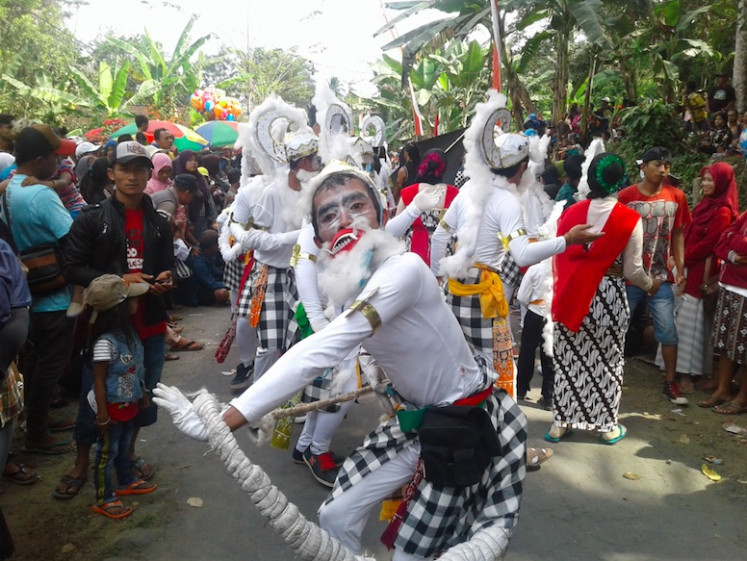
Manadonese people hold the Kunci Taon village parade from Dec. 1, culminating on Dec. 25 to celebrate Christmas. Representatives from each village usually join the Kunci Taon, which features participants wearing unique and entertaining costumes.
Although Kunci Taon is primarily a Christmas celebration, it can last until the first week into the new year. After Christmas, people also visit the cemetery to clean the family’s burial plot and decorate them with fresh flower bouquets.
Badendang rotan: Maluku
This Maluku tradition of badendang rotan is similar to tug-of-war. Also known as hela rotan, the people of Aboru country in Central Maluku perform this tradition not only to celebrate New Year but to unite the four petuanan, or seas governed collectively by a community. The four seas are the Latu Sinai of Aboru country, the Latuconsina of Pelauw country, the Marawakan of Oma country and the Surinai of Rohomoni country.
Badendang rotan is usually held each year from the end of December to the first day of the new year, and highlights the solidarity of the Maluku people.
Maluku’s traditional music is a vital element of this tradition. People sing, play the tifa (Maluku goblet drum) and perform Maluku dances to the music, with the village elder declaring the start of the ceremony.
Interestingly, on the other end of the archipelago from their region of origin on Sumatra, the Batak community in Aboru also hold badendang rotan on other holidays in addition to New Year’s Eve.







